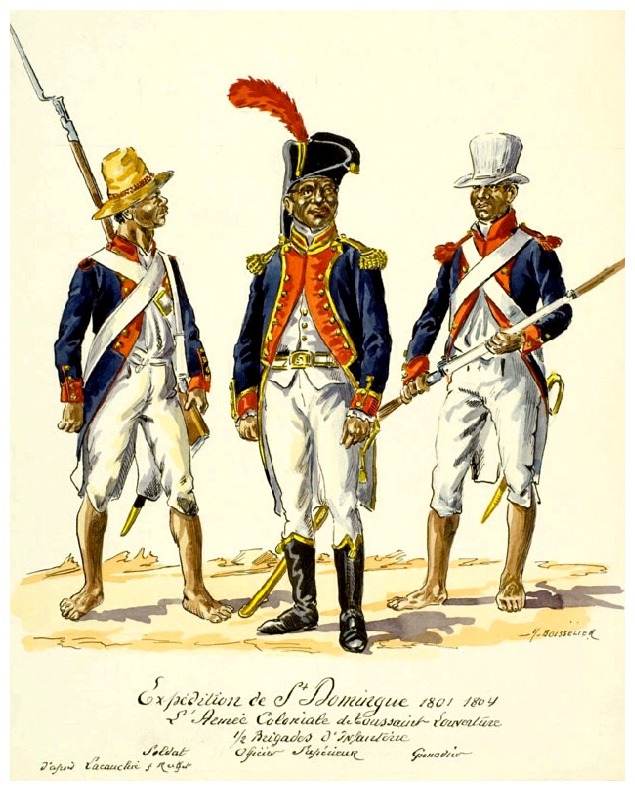
28 January 1801: The governor of Spanish Santo Domingo cedes control of his territory to Louverture. To make his achievements permanent, Louverture forms a central assembly to write a new constitution for all of Hispaniola that abolishes slavery on the entire island. Louverture’s achievements during his years in power include social reforms, structuring and organizing a new government, establishing courts of justice and building public schools.
8 July 1801: Louverture proclaims the new constitution in Saint-Domingue and is declared Governor General for life. The constitution, which is sent to France, sanctions the structures Louverture has already set in place, and emphasizes the bourgeois principles of the French Revolution.Slavery is abolished forever and the constitution eliminates social distinctions of race and color, stating “all individuals be admitted to all public functions depending on their merit and without regard to race or color.” All individuals born in the colony were to be “equal, free, and citizens of France.” Voodoo is outlawed, mandatory labor is codified and Catholicism is established as the colony’s official religion. Black slaves, chafing against Louverture’s mandatory labor requirements, reject the measures through various forms of resistance.Though the constitution essentially usurps the power of the French, Saint-Domingue still identifies as a French colony. The constitution attempts to establish Saint-Domingue as equal to France, asserting the colony’s autonomy while still trying to receive benefits from France. Though the constitution is not a formal declaration of independence, Bonaparte immediately recognizes it as a threat and rejects it. General Victor-Emmanuel Leclerc, Bonaparte’s brother-in-law, is sent to Saint-Domingue to re-impose slavery and the Code Noir.
By now planters are increasingly unhappy with the state of affairs in Saint-Domingue and are relying on Bonaparte to unseat Louverture, restore slavery, and facilitate the rise of the colony once more. Bonaparte is sympathetic, declaring that “Toussaint was no more than a rebel slave who needed to be removed, whatever the cost.” Continue Reading Timeline Here….


Illustration by Henri Boisselier via ArtDreamTumblr



















